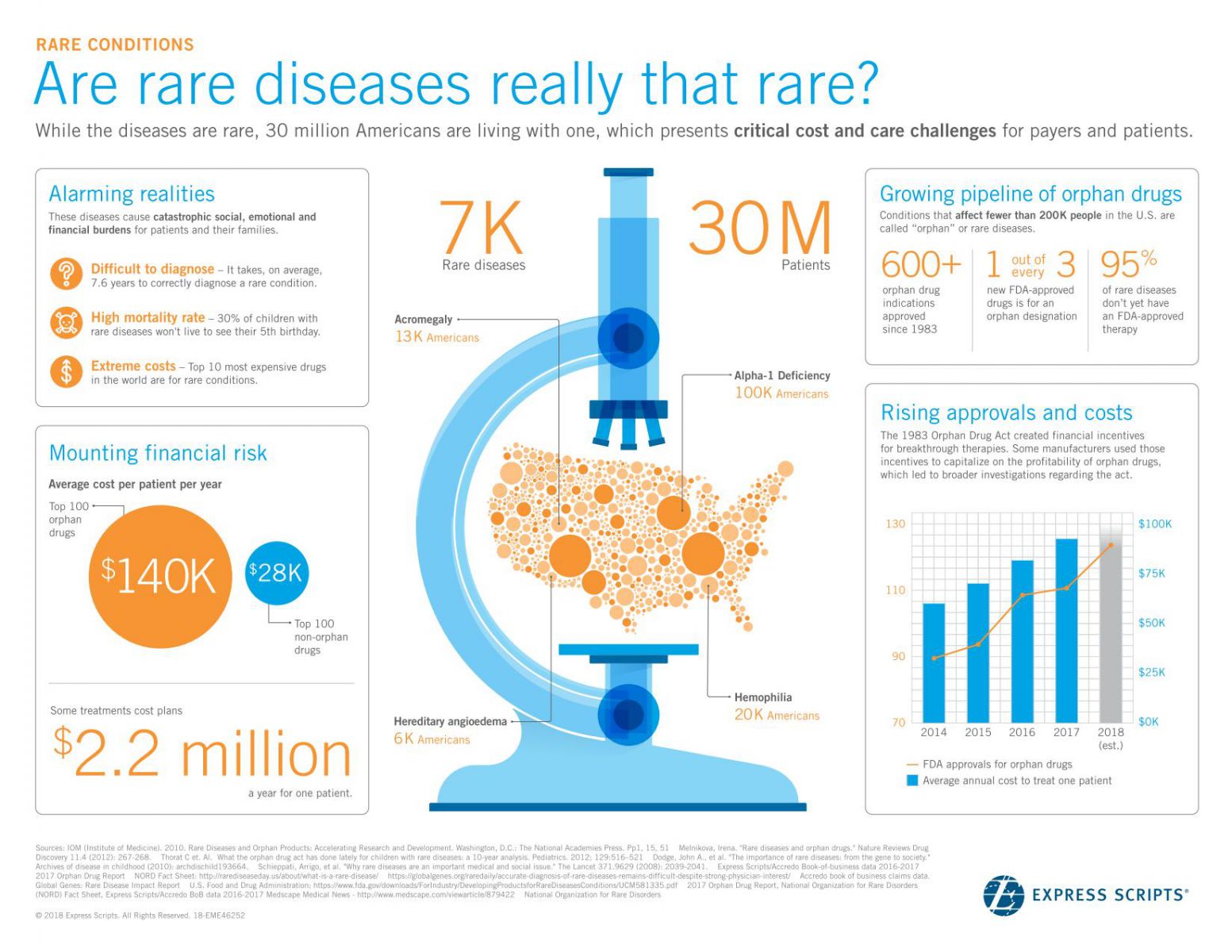
- 疾病訊息
- Rare Diseases
- Rare diseases
Rare diseases 2018-11-28
Rare diseases
Rare diseases are a group of conditions that affect a small number of people in the general population, and it is for this reason that they are also called orphan diseases. More than 7,000 rare diseases have been discovered worldwide.
About 80% of rare diseases are genetically inherited. Symptoms may not be present at birth, but when they appear they will accompany the patients for life. More than half of the rare disease patients are children. 75% of patients with rare diseases develop symptoms in early childhood, and approximately 30% of these patients die before the age of five. Currently, only about 5% of these rare diseases have FDA-approved therapeutic treatments available.
Patients with rare disease usually do not get timely confirmed diagnosis of their conditions, and there is also lack of information about these diseases. Therefore, these patients often do not have access to proper care and treatment before symptoms present.
The definition of rare disease vary between countries. According to the United States Orphan Drug Act, diseases with fewer than 200,000 patients in the United States are categorized as rare diseases. It is estimated that the total number of patients with rare diseases in the United States is 30 million people.
On the other hand, according to Regulation (EC) No 141/2000 from the EU, diseases with a prevalence rate of less than 5 in 10,000 are called rare diseases. It is estimated that the total number of patients with rare diseases in Europe is also about 30 million people.
According to the Prevention of Rare Disease and Orphan Drug Act in Taiwan, diseases with a prevalence rate of less than 1 in 10,000 are rare diseases. As of January 2018, there are more than 14,500 patients with confirmed diagnosis of rare diseases that have been reported to the government. However, according to the definition of EU and the United States, patients with rare diseases in Taiwan might be as high as 1.5 million, meaning that 99% of the rare disease patients may not have been diagnosed, or have been misdiagnosed.
Challenges for drug development of rare diseases
1. There are different types of rare diseases, but the number of patients with each individual disease is very small. This limits the potential of academic and medical research. Due to the lack of knowledge in the pathogenesis of these diseases, it is difficult to have a clear or validated drug target.
2. Due to the small number of rare disease patients, it is difficult to recruit patients in clinical trials, and good clinical trial design is also another challenge.
3. Diagnosis of rare diseases may not be easy. Correct diagnosis is heavily dependent on physicians’ clinical experience, examination with appropriate and precise equipment, and genetic testing when necessary.
Source:

